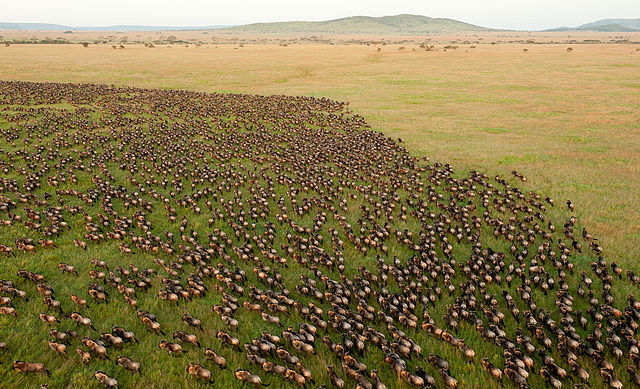-
Tips for becoming a good boxer - November 6, 2020
-
7 expert tips for making your hens night a memorable one - November 6, 2020
-
5 reasons to host your Christmas party on a cruise boat - November 6, 2020
-
What to do when you’re charged with a crime - November 6, 2020
-
Should you get one or multiple dogs? Here’s all you need to know - November 3, 2020
-
A Guide: How to Build Your Very Own Magic Mirror - February 14, 2019
-
Our Top Inspirational Baseball Stars - November 24, 2018
-
Five Tech Tools That Will Help You Turn Your Blog into a Business - November 24, 2018
-
How to Indulge on Vacation without Expanding Your Waist - November 9, 2018
-
5 Strategies for Businesses to Appeal to Today’s Increasingly Mobile-Crazed Customers - November 9, 2018
Watch wildest show on Earth
Each year about a million wildebeest, half a million gazelle, and 200,000 zebra journey from the Serengeti park in Tanzania to the Masai Mara reserve in Kenya, following a clockwise rotation dictated by rainfall and grazing land.
Advertisement
The great migration – often described as one of the great wonders of the natural world – sees over a million wildebeest move north from the Serengeti to the Maasai Mara, accompanied by hundreds of thousands of Thomson’s gazelle, zebra and eland.
It’s an exquisite opportunity that, according to HerdTracker founder Carel Verhoef, no one has an excuse to miss.
The event can be viewed twice a day, from September 29 to October 5, through Youtube as well as the video streaming app Periscope.
The live feed will also feature commentary by experts, during which viewers will be able to ask questions that will be answered in real-time: “It’s that Lion King moment brought to life”, stated Herdtracker’s Andre Van Kets.
A statement from Victoria Johnson of MakeitKenya.com, an online portal meant to bolster the Kenya’s image overseas, said the live broadcast will allow people all over the world to get a taste of its magnificence.
Although there are a few general movement patterns of the animals, the precise timing of the mass migration can not exactly be predicted and varies every year.
It’s truly a marvel of nature, that is always filled with dramatic interactions. It’s the home to thousands of the aquatic reptiles, hungrily waiting for this yearly event to catch prey, along with other predators. Over the course of a year, the animals will cover around 1,500 miles of land, chasing the rainy season as they go, and end up right back in Maasai Mara come late September.
“Without the migration, it’s harder to conceive Serengeti-Mara being what it is today”, Mr. Hirji added.
Advertisement
“We are running out of space worldwide due to the increase in human numbers and this has an effect on everything and not just the migration”, Verhoef said.





























